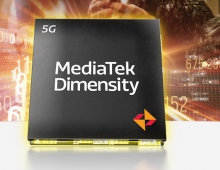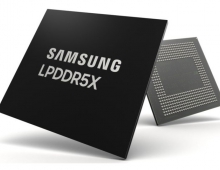
MediaTek’s Helio P90 Mobile SoC Brings AI Engine and Advanced Camera Features
MediaTek today announced the launch of the Helio P90 system-on-chip (SoC), which features APU 2.0, its new generation AI architecture for a great AI processing boost.
With a 1127 GMACs (2.25TOPs) performance, the Helio P90 seems to boast flagship device level AI power.
The Helio P90 built-in processing unit – APU 2.0 – a fusion AI architecture designed by MediaTek can deliver AI experiences that are 4X more powerful than the Helio P70 and Helio P60 chipsets. It helps users perform intensive AI tasks with faster and more accurate results while at the same time delivering longer battery life. The two blocks - APU and AI accelerator - combined with a PowerVR GM 9446 GPU running at 970 MHz, deliver 1,127 GMACs/s with software optimizations still ahead.
The number falls far short of the 7 Tera tensor operations/s on 8-bit integer jobs that Qualcomm claims for its 855.
Made in a 12-nm node, the octa-core Helio P90 is designed with two Arm A75 processors operating at up to 2.2GHz and six A55 processors operating at up to 2.0GHz. By contrast, the 7-nm Snapdragon 855 uses four large cores, one running up to 2.84 GHz and three at 2.42 GHz, and four of the A55 cores at 1.80 GHz. MediaTek’s newest CorePilot technology also ensures processing is done in an efficient way across its cores.
It also supports Google Lens, deep-learning facial detection, real-time beautification, object and scene identification, artificial reality (AR) and mixed reality (MR) acceleration, plus other real-time enhancements for photos and videos. Developers and device makers can create AI applications with the Helio P90 using common frameworks such as TensorFlow, TF Lite, Caffe and Caffe2, based on MediaTek’s NeuroPilot SDK which is fully compliant to Google Android Neural Networks API (Android NNAPI).
MediaTek Helio P90 supports a supersized 48MP camera or 24+16 MP dual cameras. Users can capture at 48MP with up to 30 frames per second (FPS) with zero shutter delay, or enjoy super slow-motion at 480FPS in HD. MediaTek also brings upgraded triple image signal processors (ISPs) capable of 14-bit RAW and 10-bit YUV processing.
The new ISP AI engine can accurately detect faces and scenes in real-time under low light and motion conditions.
The Helio P90 supports dual SIM dual VoLTE 4G LTE WorldMode with a fast Cat-12 (DL) / Cat-13 (UL) 4G LTE modem. 4x4 MIMO and 256QAM provided better data throughput in highly populated areas. It also supports 2x2 802.11ac and Bluetooth 5.0.
For its part, the Snapdragon 855 integrates a Category 20 LTE modem supporting 7× carrier aggregation and two flavors of Wi-Fi — the 60-GHz 802.11ay and the pre-standard .11ax, both claiming to be capable of 10-Gbit/s data rates. In addition, Qualcomm pitches the 855 with its separate 5G modem, powering first-generation 5G handsets from Samsung and OnePlus early next year in sub-6-GHz and millimeter-wave bands.
Mediatek has an M70 standalone 5G modem, but the company says that it is looking at going directly to an integrated SoC product rather than a standalone modem and focus on sub-6 GHz, aiming for customer products launching in late 2019 or early 2020.
The Helio P90 is expected to be available globally in consumer devices starting in Q1 2019.
The Helio P90 falls short of the recently announced Qualcomm Snapdragon 855 in many respects but is likely to provide fierce competition a notch below flagship handsets, especially among China’s cost-conscious OEMs.
Specifications
- AI: Media Tek APU 2. 0
- CPU: Octa-Core: 2x ARM Cortex-A75 @ 2.2GHz; 6x ARM Cortex-A55 @ 2.0GHz
- GPU: IMG PowerVR GM 9446 GPU up to 970MHz
- Memory: 2-Channel LPDDR4x up t o 8GB , 1866MHz
- Storage: UF S 2. 1
- Camera: 48MP or 24+16MP Displ ay 2520 x 108 0 (Full HD +) at 21:9
- Modem: 4G L TE Cat- 12 (DL) / Cat- 13 (UL) (FDD / TDD ), 4x4 MIMO , 3CA, 256Q AM, HPUE, IMS (V oL TE\ ViL TE\ WF C), eMBMS , Dual 4G VoLTE (DSDS), Band 71, TAS 2.0
- Connectivity: 802. 11 a/b/g/n/ ac, Bluetooth 5.0 , GPS + Glonass + Beidou + Galileo, FM radio





















